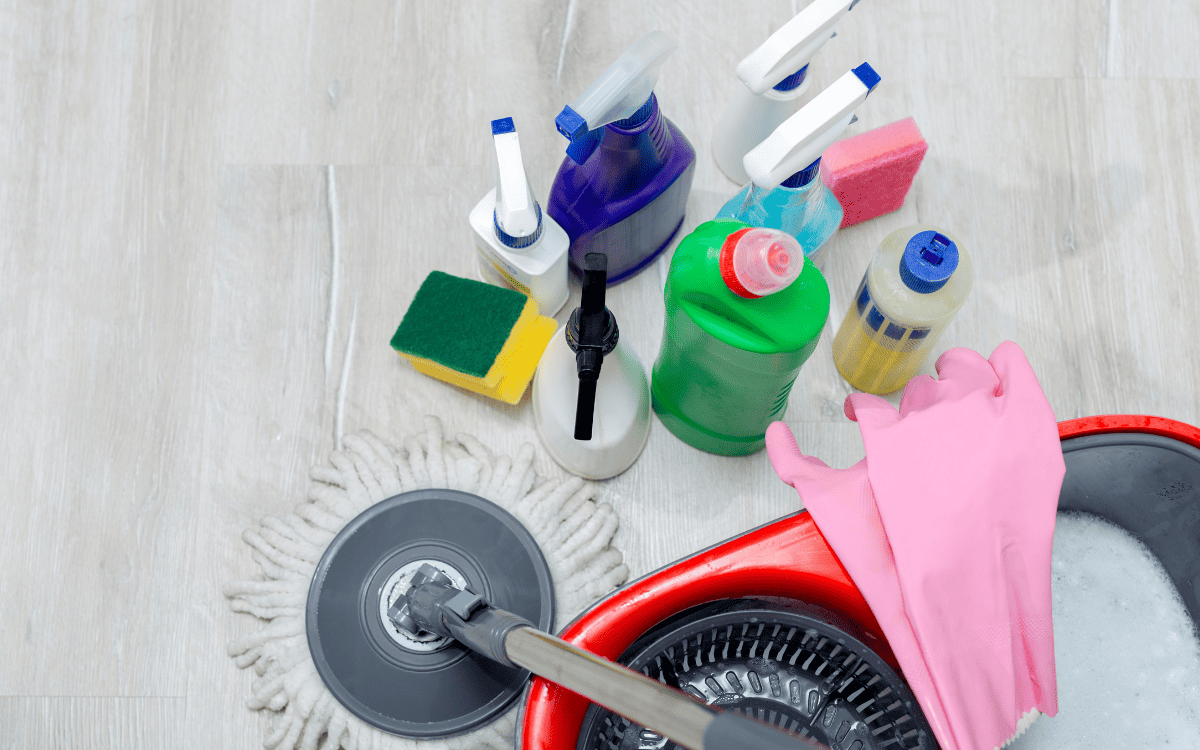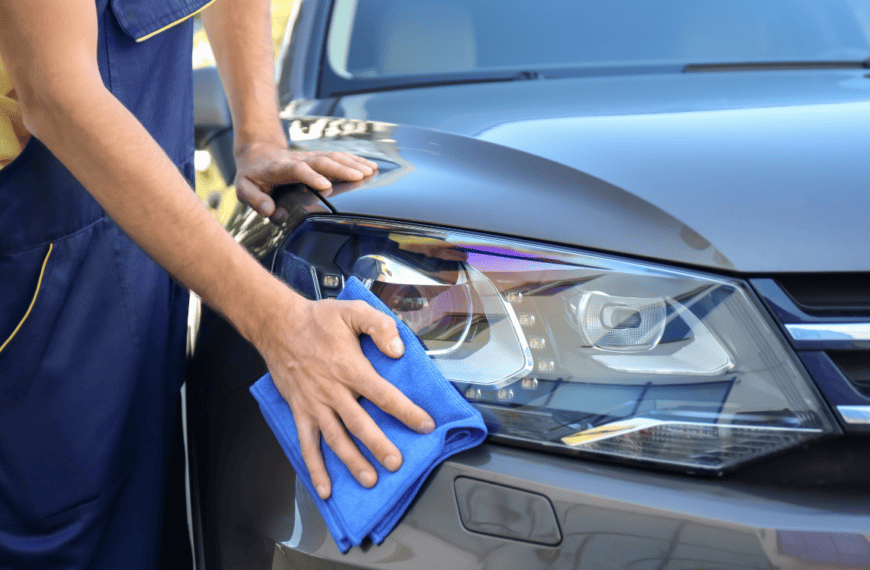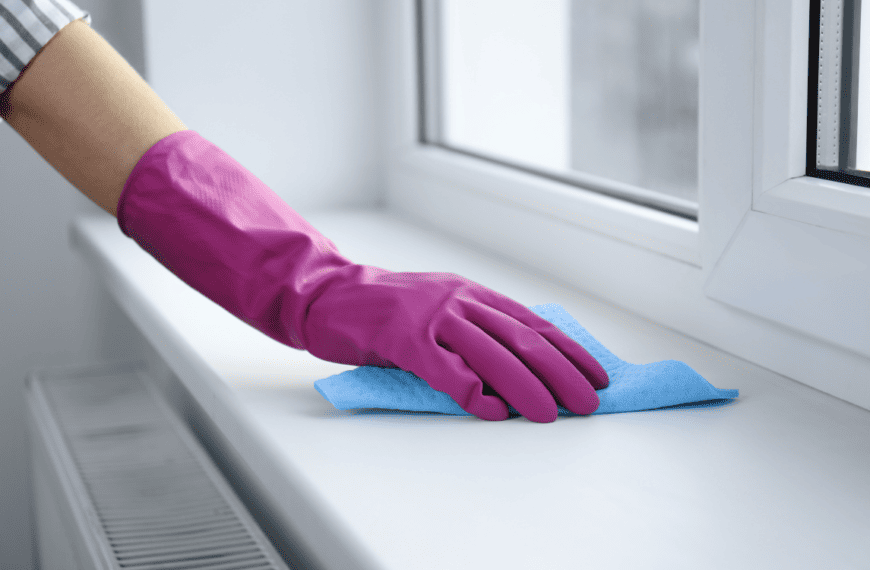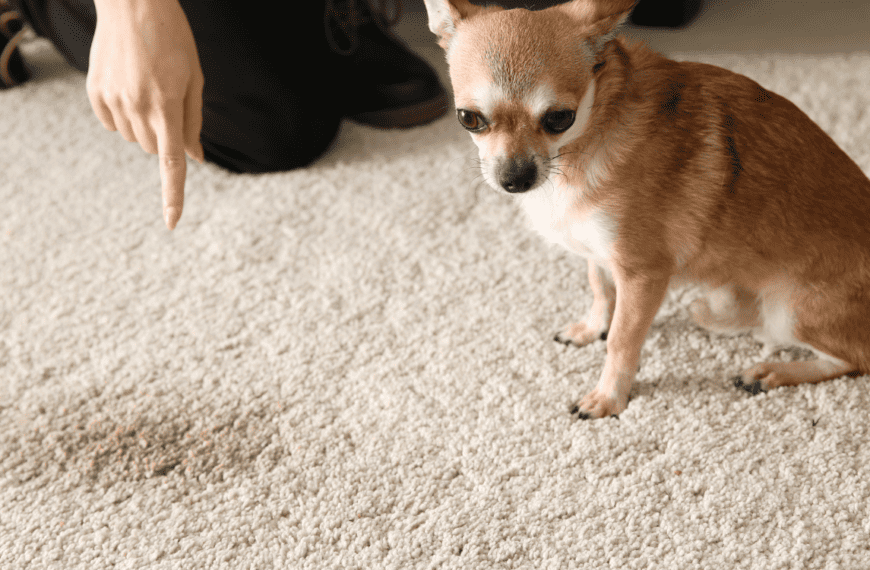KEY TAKEAWAYS
- Never Mix Bleach and Acids: Combining bleach with acids like vinegar or lemon juice produces toxic chlorine gas, leading to respiratory issues
- Avoid Combining Different Drain Cleaners: Mixing base and acid drain cleaners can release harmful gases, posing health risks
- Read Labels Carefully: Always read product labels for warnings and dwell time. If one cleaner doesn’t work, rinse the area before applying another to avoid dangerous chemical reactions
With sanitation becoming a focus in post-pandemic culture, many of us rely on more frequent and aggressive methods to ensure our homes are clean. The irony is that the more cleaning products we use to keep us safe, the more they expose us to harm!
Nearly 130,000 people went to the E.R. due to accidental injuries from cleaning products in 2022. Ingestion and inhalation are the most apparent concerns surrounding harsh cleaners. But a surprising number of people endanger themselves simply by combining the wrong chemicals.
Most of us know bleach rarely plays nice with others. But few appreciate the potential problems with blending otherwise harmless ingredients.
As much as we want stain-free, germ-free homes, cleanliness should never cost us our health. Stay safe during your next deep clean by following this breakdown of what cleaning products not to mix.
Household Cleaning Products You Should Never Mix
Mixing two powerful cleaning agents can often seem like a logical way to double your cleaning power. Unfortunately, chemistry rarely works like that. Combining reactive acids and bases is an uncertain process. More often than not, the results are lackluster at best and lethal at worst. If they don’t create toxic gases that harm your lungs, they could damage the surface you’re trying to clean.
Chlorine bleach is the most dangerous household chemical when mixed with other cleaners. The fast-acting whitener and disinfectant is hazardous by itself. But its reactions with acids and cleaners create a slew of toxic chemicals. Exposure to these byproducts in a poorly ventilated space often leads to several health issues, such as:
- Breathing issues
- Nose, eye, and throat irritation
- Watery eyes
- GI upset
- Chest pain
- Headaches
- Dizziness
In worst-case scenarios, toxic mixtures have been fatal. Generally, blending anything other than water with bleach isn’t a wise idea.
Bleach isn’t the only everyday cleaner that turns even more dangerous when it mixes with other chemicals. Here’s a look at some of the worst cleaning products to combine and their potential consequences.
Bleach and Acids
Sodium hypochlorite reacts with acids to form various breakdown products, including toxic chlorine gas. The hazard is surprisingly common. Over 8,500 chlorine gas exposures occurred in 2021, nearly 60% stemming from mixing acids with bleach. Several DIY and acidic commercial cleaning products can produce chlorine gas, including:
- Bleach and vinegar. Though not as potent as some other acids, the diluted acetic acid in vinegar releases toxic chlorine gas. Concentrated cleaning vinegar will have a stronger reaction
- Bleach and lemon juice. Combing bleach with citric acid in lemon juice can create toxic fumes
- Bleach and rust/limescale remover. CLR, Bar Keepers Friend, and many other rust, tarnish, and lime removers use acids
- Bleach and toilet bowl cleaner. Many toilet cleaners, such as Lysol, contain hydrochloric acid to clean and disinfect
- Bleach and drain cleaner. Heavy-duty drain cleaners like Liquid Fire use concentrated sulfuric or hydrochloric acid
Minor chlorine gas exposure causes face and throat irritation. Prolonged exposure in higher concentrations often leads to respiratory damage. You may suffer acute inhalation injury (AII). Signs of AII can include airway inflammation, bronchitis, and pulmonary edema, a condition in which fluid fills the lungs.
Bleach and Acetone
Bleach and acetone react to create chloroform. In high enough doses, this anesthetic compound can knock you out cold in as little as five minutes. Minor amounts will cause disorientation. Excessive exposure can harm the nervous system, eyes, skin, and internal organs.
Bleach and Rubbing Alcohol
Isopropyl alcohol is another common solvent that can react with bleach. Like acetone, rubbing alcohol creates chloroform. If you inhale the toxic fumes, you may experience dizziness, loss of consciousness, or organ damage.
Bleach and Ammonia
Bleach and ammonia create a toxic gas called chloramine. Like chlorine gas, chloramine causes assorted respiratory, skin, and facial irritation. Pulmonary edema is possible in extreme cases. Higher exposures can potentially result in collapse, coma, and eventual death.
Over 3,600 chloramine exposures occurred in 2021. Part of that is due to the ammonia in many everyday household cleaning products. Window cleaners like Windex can release toxins into the air if they mix with bleach. All-purpose cleaners, disinfectants like Lysol, and even dish soap can also contain ammonia and amines.
Hydrogen Peroxide and Vinegar
Hydrogen peroxide and vinegar combine to form peracetic acid. Dilute household forms of the two materials are typically non-hazardous. If they make incidental contact on a surface, there’s usually nothing to worry about. But when you mix cleaning vinegar and concentrated peroxide, you face a greater risk of irritation and breathing trouble. As with chlorine gas, pulmonary edema, and organ damage can result from the acidic fumes.
Different Drain Cleaners
Stubborn clogs can lead you down a path of increasingly powerful drain cleaners. But if you don’t check the ingredients you could release toxic gas by using several products.
A cleaner like Drano may use sodium hydroxide or another base. If that doesn’t work, you might try another product, such as Zep Drain Opener, which uses an aggressive acid. Combining them in the drain means chlorine gas and other chemicals will waft up the pipe and into the room.
Multiple Commercial Cleaning Products
Taking a broader perspective, you shouldn’t combine any commercial cleaning products. Like drain cleaners, many toilet cleaners use acids, while others use bleach or hydrogen peroxide. It’s the same for tile cleaner, mildew stain remover, or almost any other specialized chemical. Unless you pay close attention to the ingredients, there’s no telling what will happen when two cleaners mix. In most cases, you can bet it won’t be promising.
Safe but Ineffective Cleaning Combinations
Blending bleach with just about any household chemical can create corrosive gases. But health hazards aren’t the only reason to avoid combining cleaners. Many are perfectly safe to mix, but doing so can make two otherwise effective cleaners completely useless. The following are a few common examples of unnecessary cleaning combinations:
- Vinegar and baking soda. While the bubbling reaction can loosen soil and unclog drains, these create water and sodium acetate, a weak cleaner at best
- Enzyme cleaner and disinfectant. Disinfectants can destroy the stain-removing active enzymes and bacteria in enzyme cleaners like Rocco & Roxie
A cleaning combination will rarely be greater than the sum of its parts. Sure, some general cleaners combine to make potent targeted solutions. But in many cases, product manufacturers have figured out the best formulas. If blending two common chemicals made an even better cleaner, there would likely be a product that does it.
Best Practices To Avoid Mixing Toxic Chemicals
The countless nuances of combining household cleaning products can get confusing. I recommend following the safest rule: don’t mix cleaners.
If one product isn’t giving you results, rinse and dry the area before applying another solution. You’ll never have to worry about which household chemicals become dangerous to mix. Plus, you won’t set yourself up for disappointment by combining cleaners that cancel each other out.
Read the product labels before use. Note the dwell time and warnings, particularly if you plan to use multiple cleaners. Store solutions away from animals and children. Make sure each has a blatant identifier and hazard label.
How To Handle Dangerous Mixtures
You should already take several safety precautions whenever you clean with chemicals. The windows should be open to ensure a well-ventilated space. Gloves and a mask should be on, as well as long sleeves to avoid skin contact.
If you accidentally mix two cleaners, open the windows and leave the room. Contact poison control if you feel signs of exposure. They will tell you how to treat and dispose of hazardous chemicals.
Frequently Asked Questions (FAQ)
What’s the Safest Way To Dispose of Mixed Cleaning Products?
Even in their mixed forms, cleaning products are often safe to go down the drain. Diluting mixtures heavily with water can often limit adverse effects on it. Check the product packaging for instructions. When in doubt, contact poison control for direction on your particular situation.
Are Natural Cleaning Products Safer To Mix?
You can usually mix natural cleaners without issue. We often recommend doing so when making DIY solutions. But as we’ve seen with vinegar, certain combos can still be dangerous or ineffective. Never assume they’ll work because they’re all-natural. Research the combination and take the necessary steps to ensure safe use.









